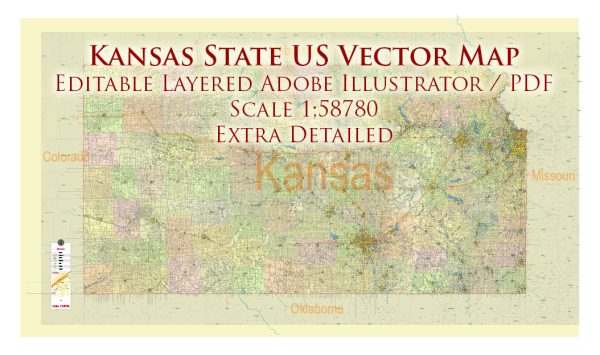Kansas State has a diverse history of urban development that reflects the state’s growth and changing economic landscapes. While much of Kansas is known for its vast agricultural expanses, several cities within the state have played pivotal roles in its urban development. Here’s a brief overview:
- Native American Influence: Before European settlers arrived, the region that is now Kansas was inhabited by various Native American tribes. Their settlements and way of life were influenced by the geography and natural resources of the area.
- Westward Expansion and Settlement: The mid-19th century saw a significant influx of settlers as part of the westward expansion movement. Cities like Wichita and Topeka were established as trade and transportation hubs, serving as stops along the Santa Fe Trail and later the railways. These cities played crucial roles in connecting the eastern and western parts of the United States.
- Railroad Development: The expansion of railroads in the late 19th century further facilitated urban growth. Cities like Kansas City, which straddles the Kansas-Missouri border, became major railroad and cattle trading centers. The railroad network not only boosted commerce but also spurred the growth of towns along its routes.
- Agriculture and Industry: Agriculture has always been a cornerstone of Kansas’s economy, influencing urban development. Cities such as Wichita became key centers for agricultural processing and manufacturing. The discovery of oil in certain regions also led to the development of oil-related industries.
- Dust Bowl Era: The 1930s brought about the Dust Bowl, a severe environmental disaster that affected agricultural practices and led to significant social and economic challenges. Many Kansans, particularly those in rural areas, were forced to migrate to urban centers in search of employment and stability.
- Post-WWII Suburbanization: Like many other parts of the United States, Kansas experienced suburbanization in the post-World War II era. Cities expanded, and suburbs grew as returning veterans and their families sought homes outside of the urban core.
- Modern Economic Shifts: In more recent decades, Kansas has undergone economic shifts, with a focus on technology, aviation, and healthcare. Cities like Lawrence, home to the University of Kansas, have developed as educational and cultural hubs.
- Cultural and Educational Centers: Kansas City, Kansas, and Kansas City, Missouri, together form a metropolitan area known for its cultural attractions, including museums, performing arts, and professional sports teams. Educational institutions like the University of Kansas and Kansas State University have also played roles in shaping urban development and fostering intellectual communities.
- Challenges and Opportunities: Like many states, Kansas faces challenges related to urbanization, including infrastructure needs, affordable housing, and sustainable development. At the same time, cities in Kansas present opportunities for economic diversification and cultural enrichment.
In summary, Kansas’s urban development history is marked by a convergence of factors, including westward expansion, transportation networks, agriculture, industry, and more. The state’s cities continue to evolve, adapting to new economic realities while preserving their unique historical and cultural identities.


 Author: Kirill Shrayber, Ph.D.
Author: Kirill Shrayber, Ph.D.